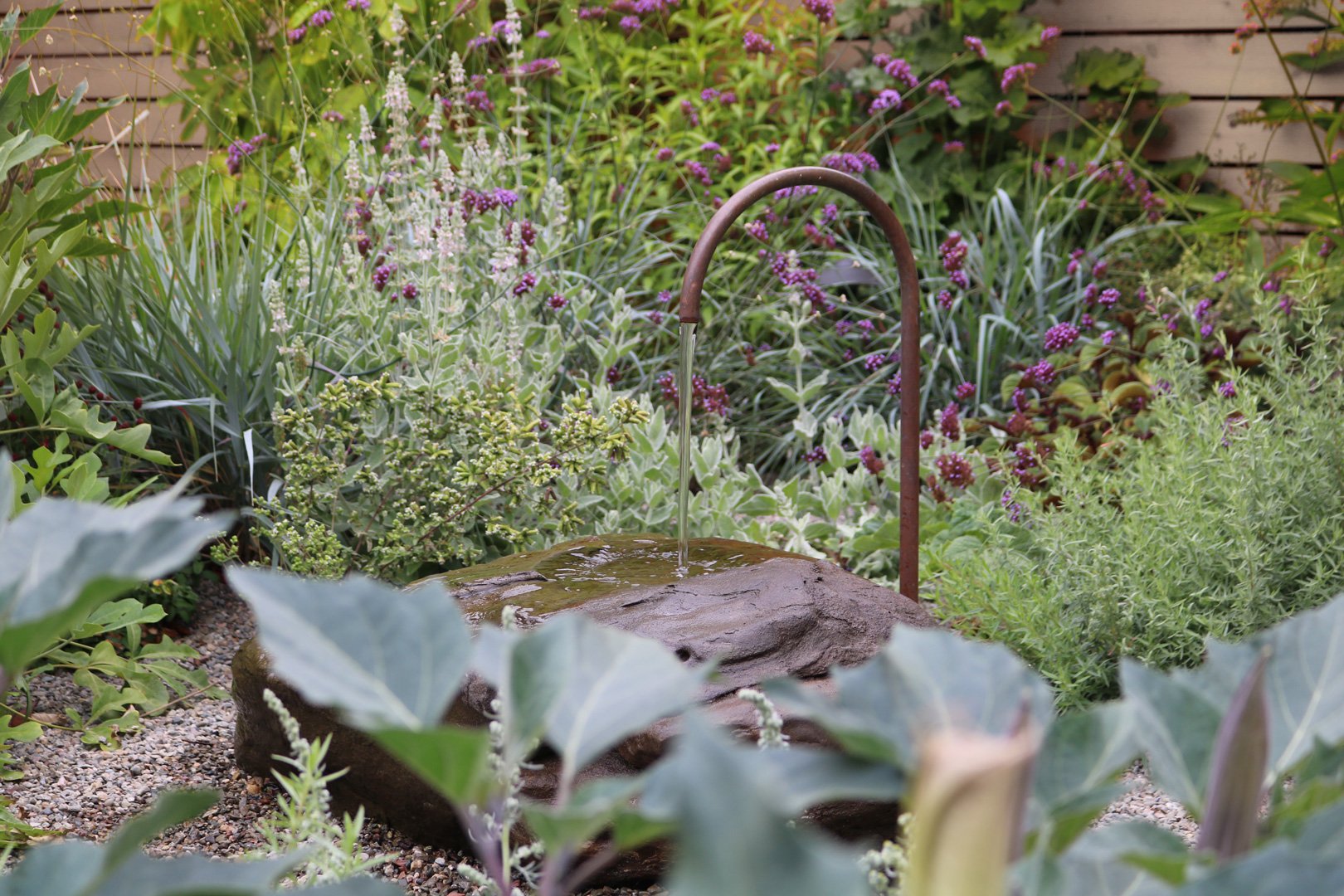WITH SOFT STUDIO
BEHIND THE SCENES WITH SOFT STUDIO
SOFT STUDIO is a plant-focused landscape design practice based in Oakland, California. Founded by Clementine Jang and Jessie Booth (pictured below) who seek a curious, collaborative and exploratory attitude toward design.
“We see landscape as a lived experience, rather than an end product. We want to help our clients cultivate unique spaces that embrace the ephemerality of nature—spaces designed to spark a spirit of inquiry, create memories, and build perspective as they evolve over time.”
Their practice integrates contemporary aesthetics with an environmentally conscious ethos, creating spaces that embrace a role in the broader ecosystem. They are driven by a belief in the soft power of the landscape, and a fascination with the ordinary and unexpected qualities and processes that create exceptional spaces.
We are thrilled to have collaborated with SOFT STUDIO for our Los Altos Crafted Modern project. Their design features native plants that will resist drought and bring life to the landscape: California Sycamores (Platanus racemosa), White Sage (Salvia apiana), Deer Grass (Muhlenbergia rigens), and many others.
Q: What inspires your plant-focused designs?
It sounds simple but the plants are our inspiration. Their expression, seasonality, and peculiar growth habits lend them a personality that we get excited about.
Q: What is the effect you hope your designs will have on people?
Drawing people into the garden as much as possible in their day to day life. Also, we want to connect people with the wider ecological network their garden is situated in, so they can grow to become stewards of their landscape.
Q: Can you share a highlight from working on recent commissioned projects? What have you learned from the process?
One of our clients grew up in Singapore and he wanted South Asian sub-tropical herbs in their Oakland garden for cooking as well as native plants. We interlaced California species and sub-tropical species in an experimental planting palette, taking into account their different water needs. Traditional gardening practices wouldn’t necessarily recommend what we have done, but so far the plants have been mingling very well. It’s always good to remember there’s always room for exploration.
Q: What do you enjoy most about working on commissioned projects?
Seeing how our built gardens take on a life of their own!
Q: Can you share about how your passion for plants and gardens serve as a catalyst for you to explore issues of sustainability, climate change, cultural identity, and social justice?
Landscapes are continuous across property lines, even if it doesn’t feel that way in urban and fragmented areas. We think the smallest private garden can contribute aesthetically and ecologically to its greater context. We use California native plants mixed with drought-tolerant non-natives to promote botanical diversity in the face of climate change. We’re always thinking about what will help the garden survive in hotter, drier, and more turbulent climates.
Q: If you were a plant, what would you be and why?
CJ: Paulownia tree because it’s adaptable, versatile and tenacious like how my life has turned out to be, thriving in many different places of the world. Paulownia coreana grows in Korea but the most common Paulownia species that resides all over the world is Paulownia tomentosa. This tree can be found in the concrete cracks of disturbed urban areas and sprouting up between buildings.
JB: A California buckeye tree, Aesculus californica, because it feels so at home amongst the oaks in northern California. Its delicate flowers and fanciful palmate leaves are an impressive show in spring, then the tree drops its leaves to prepare for the hot late summer. It honors seasons of productivity and rest very beautifully!
Q: If you weren’t a landscape architect, what would you be or liked to be?
CJ: I already have tried most of my first desired professions before; artist and florist. With no strings attached to capitalism, I would probably choose to be a mushroom forager. Ever since moving to Northern California, I’ve really enjoyed learning about and foraging for mushrooms on the Pacific Coast.
JB: I would work at a botanical garden or as an ecologist.
Q: What is the most treasured object in your own home?
JB: An egg-shaped quartz rock, tumbled perfectly smooth by waves, picked up from a beach on Cape Cod while Clementine and I were in graduate school together.
CJ: My aunt, Um Mikeum’s artwork. She’s a wonderful Korean artist. I feel grateful to have her work that inspires me.
Q: What are your aspirations for the next 3-5 years?
Build some funkier projects with clients who are down to experiment with us.
Q: What would be your dream project?
The landscapes we are most moved by speak to layering, time, and a spirit of place and we’d love to create a botanical cemetery garden. If not a ground-up project, it would be a dream to revive an existing place like the Mountain View Cemetery and adjacent Chapel of the Chimes Crematory in Oakland. Both of these serene places are open to the public but their plantings and condition need more love. The cemetery, designed by Central Park’s landscape architect, Frederick Law Olmsted, is one of the most beautifully designed open spaces in the Bay Area. The crematorium is a meditative indoor garden designed by Julia Morgan. It’s a beautiful space everyone in the Bay Area should visit!
Q: What motto or mantra do you try to live by?
Stay soft and nimble.
Q: What advice do you have for an aspiring landscape architect?
Remain true to what called you to the profession in the first place. Academia and professional practice will be great sources of education and experience, but when you’ve absorbed enough of what you need to learn, don’t forget what makes you really happy.







